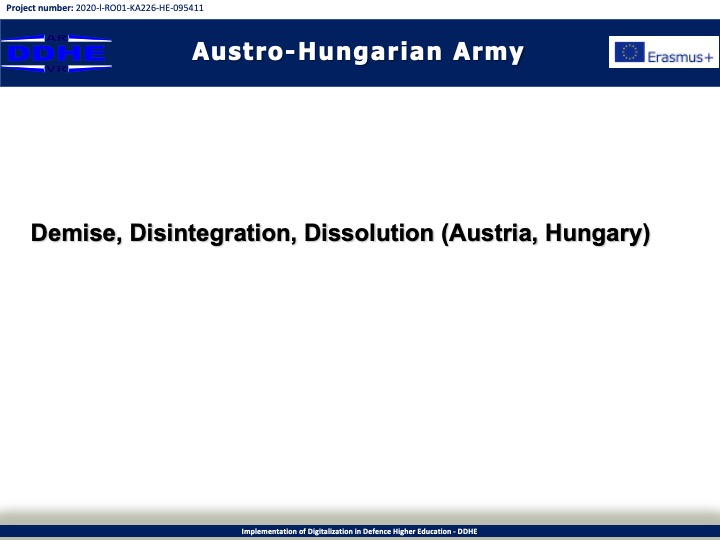Pliki załączników
The duality of the Habsburg monarchy had been underlined from the very beginning of the war. Whereas the Austrian parliament, or Reichsrat, had been suspended in March 1914 and was not reconvened for three years, the Hungarian parliament in Budapest continued its sessions, and the Hungarian government proved itself constantly less amenable to dictation from the military than had the Austrian. The Slav minorities, however, showed little sign of anti-Habsburg feeling before Russia’s March Revolution of 1917. In May 1917, however, the Reichsrat was reconvened, and just before the opening session the Czech intelligentsia sent a manifesto to its deputies calling for “a democratic Europe…of autonomous states.” The Bolshevik Revolution of November 1917 and the Wilsonian peace pronouncements from January 1918 onward encouraged socialism, on the one hand, and nationalism, on the other, or alternatively a combination of both tendencies, among all peoples of the Habsburg monarchy.
Early in September 1918 the Austro-Hungarian government proposed in a circular note to the other powers that a conference be held on neutral territory for a general peace. This proposal was quashed by the United States on the ground that the U.S. position had already been enunciated by the Wilsonian pronouncements (the Fourteen Points, etc.). But when Austria-Hungary, after the collapse of Bulgaria, appealed on October 4 for an armistice based on those very pronouncements, the answer on October 18 was that the U.S. government was now committed to the Czechoslovaks and to the Yugoslavs, who might not be satisfied with the “autonomy” postulated heretofore. The emperor Charles had, in fact, granted autonomy to the peoples of the Austrian Empire (as distinct from the Hungarian Kingdom) on October 16, but this concession was ignored internationally and served only to facilitate the process of disruption within the monarchy: Czechoslovaks in Prague and South Slavs in Zagreb had already set up organs ready to take power.
